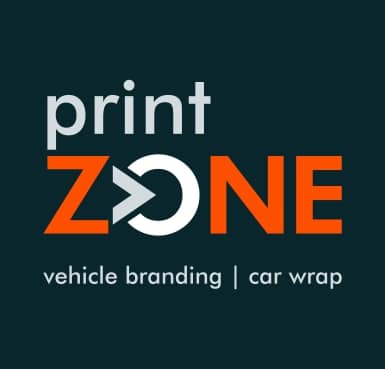Dubai’s Roads and Transport Authority (RTA) plays a vital role in regulating vehicle branding design across the emirate. Mobile advertising has become increasingly popular among businesses seeking to expand their reach, making a proper understanding of RTA guidelines essential for success.
Companies must navigate specific requirements that ensure safety, maintain cultural values, and create effective advertising campaigns while adhering to local standards.
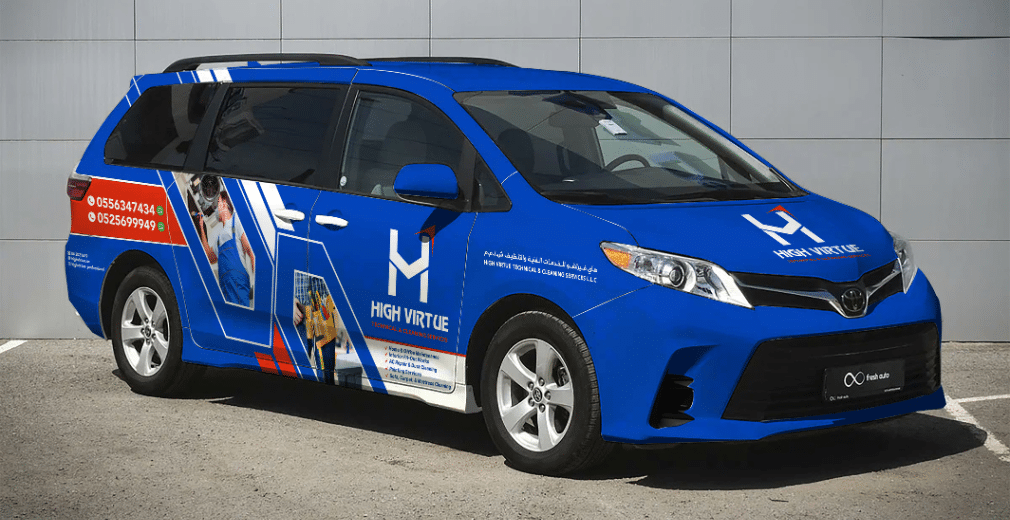
Vehicle Branding Permits: Starting Point for Success
The permit application requires detailed documentation, including vehicle registration information, trade license details, and comprehensive design proposals. RTA officials review each submission to ensure compliance with established guidelines.
Approval times vary based on application completeness and design complexity. Companies should plan advertising campaigns with sufficient lead time to accommodate the approval process.
Language and Cultural Requirements
Arabic language integration stands as a cornerstone of Dubai’s vehicle branding design regulations. A minimum of 50% Arabic content maintains cultural authenticity while ensuring effective communication with the local audience.
English content accommodates international audiences and expat communities. Font selection must ensure clear readability in both languages. Text sizing should maintain proper proportions between Arabic and English content.
Design Parameters and Visual Elements
The RTA emphasizes clean, uncluttered designs that enhance brand visibility without compromising safety. Vehicle advertisements must maintain visual harmony through careful placement and appropriate sizing. Each side of a vehicle may display up to five images, carefully selected to align with local values and cultural sensitivities.
Visual elements require thoughtful consideration regarding placement and content. The upper front section remains free from advertising materials, preserving vehicle aesthetics and driver visibility. Three-dimensional imagery, human photographs, and certain symbols fall under restricted categories to maintain cultural appropriateness and road safety standards.
Size and Placement Considerations
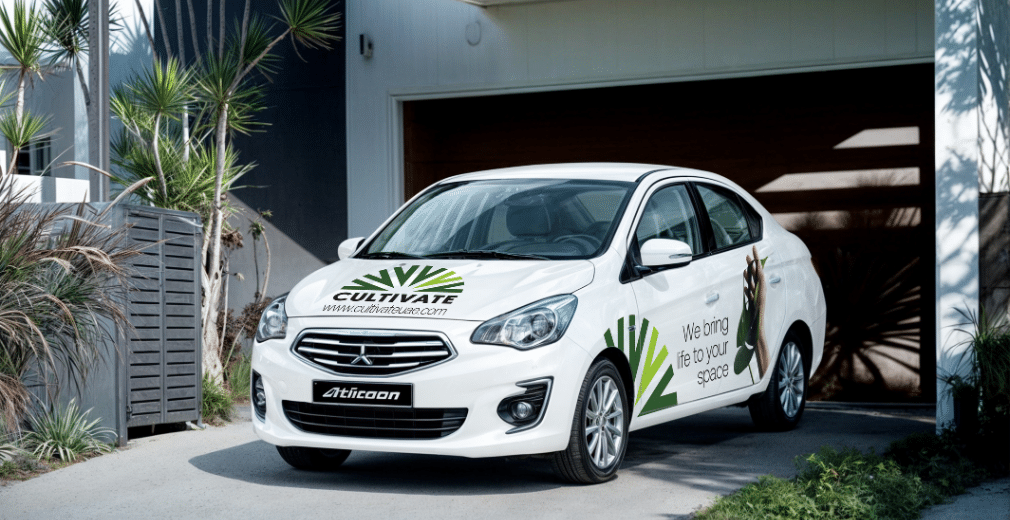
Surface coverage plays a crucial role in vehicle branding design. Advertisements must occupy no more than 50% of the total vehicle surface area, including all visible sides and the roof section. Strategic placement ensures maximum visibility while maintaining vehicle functionality and safety features.
Critical areas such as windscreens, windows, lights, and safety equipment must remain unobstructed. Side panel advertisements follow specific dimensional guidelines, with height restrictions of 1.5 meters and width limitations of 2.5 meters, ensuring proportional and visually appealing designs.
Material Selection and Technical Requirements
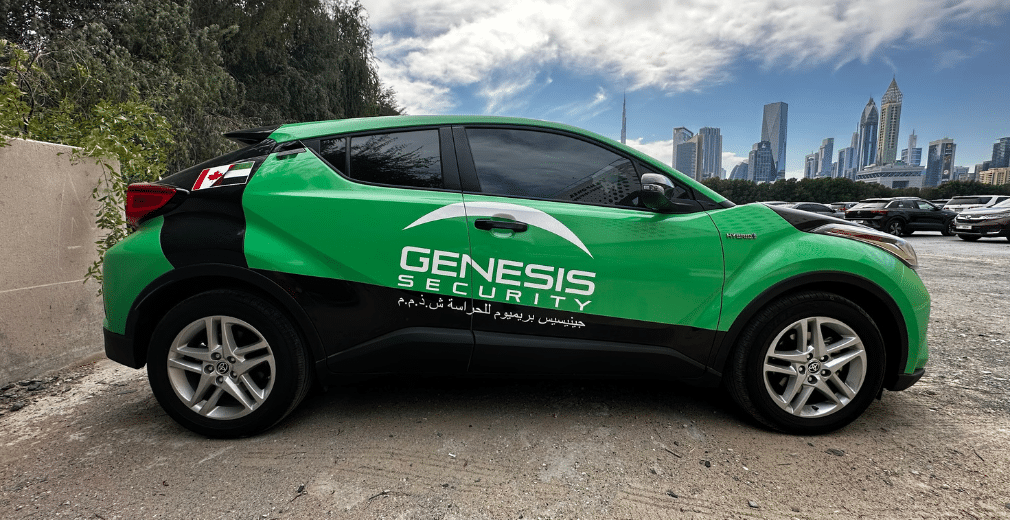
Successful vehicle branding in Dubai’s unique climate demands careful consideration of material quality and specifications. Self-adhesive vinyl, the industry standard, must meet rigorous RTA requirements while withstanding intense heat, sun exposure, and occasional sandstorms. Premium-grade vinyl materials typically range from 50 to 70 microns in thickness, offering optimal balance between durability and aesthetic appeal.
Climate-Specific Considerations:
Dubai’s climate presents unique challenges for vehicle branding materials. Summer temperatures regularly exceed 45°C (113°F), while UV exposure remains intense throughout the year. Quality vinyl materials must incorporate:
- UV-resistant layers that prevent color fading.
- Heat-stable adhesives that maintain bond strength in extreme temperatures.
- Protective coatings that resist sand abrasion.
- Moisture-resistant properties for humidity protection.
Material Durability Standards:
RTA guidelines specify minimum durability requirements for vehicle branding materials. Premium vinyl products should maintain visual quality for 3-5 years under normal conditions. Material certification must demonstrate:
- Color fastness under intense sun exposure.
- Dimensional stability during temperature fluctuations.
- Adhesive performance in varying weather conditions.
- Resistance to cleaning chemicals and environmental pollutants.
Content Guidelines and Restrictions
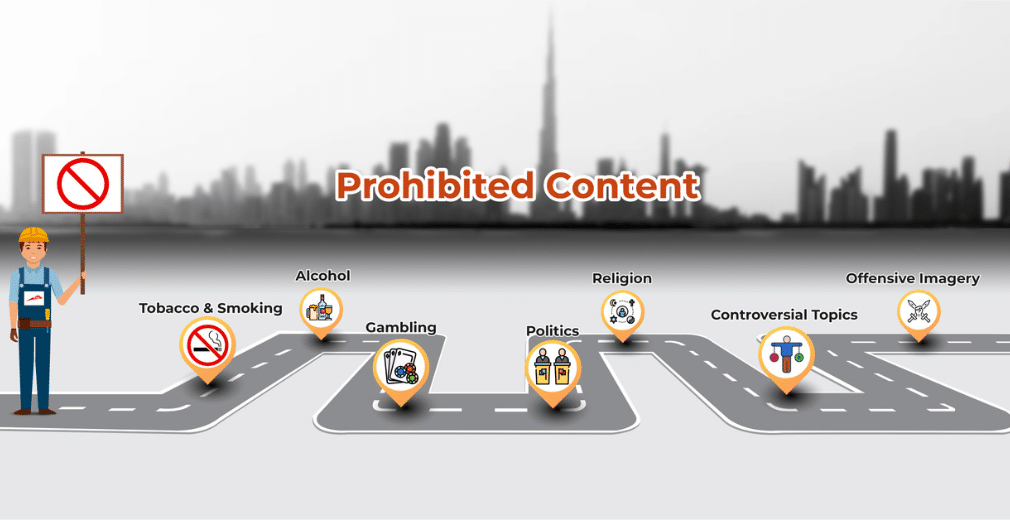
RTA regulations carefully define acceptable content for vehicle advertisements. Prohibited elements include:
Marketing materials related to tobacco, alcohol, or gambling face strict prohibition. Political messages, religious symbols, and controversial content remain outside acceptable parameters. Advertisements must maintain accuracy regarding business activities and align perfectly with trade license specifications.
Prohibited Content Categories:
- Tobacco and smoking-related content, including electronic cigarettes.
- Alcoholic beverages and related products.
- Gambling services or gaming promotions.
- Political messages or campaign materials.
- Religious symbols, texts, or references.
- Controversial social or cultural topics.
- Offensive or inappropriate imagery.
Illumination and Color Standards
Color selection and lighting elements follow specific RTA guidelines aimed at enhancing visibility while preventing distraction. Static illumination remains permissible, while dynamic or flashing lights face restriction. Color schemes must consider contrast with the base vehicle color while meeting specific requirements for different vehicle categories.
The Application Journey
Securing approval for vehicle branding design involves multiple steps, beginning with careful preparation of design concepts and documentation. Companies must submit comprehensive proposals detailing every aspect of their planned advertising campaign, including precise measurements, material specifications, and content details.
Safety-First Approach
Road safety remains paramount in RTA’s vehicle branding regulations. Designs must preserve driver visibility, maintain clear sight lines, and avoid creating potential hazards. Safety considerations extend to emergency feature accessibility and structural integrity preservation.
Professional Implementation
Quality installation ensures successful vehicle branding design implementation. Professional service providers familiar with RTA requirements help maintain compliance while achieving desired marketing impact. Regular maintenance checks preserve advertisement quality and compliance status.
Brand Integration Strategies
Effective vehicle branding balances regulatory compliance with marketing objectives. Companies achieve success by creating cohesive designs that represent their brand while respecting local guidelines. Professional appearance and market positioning remain achievable within regulatory frameworks.
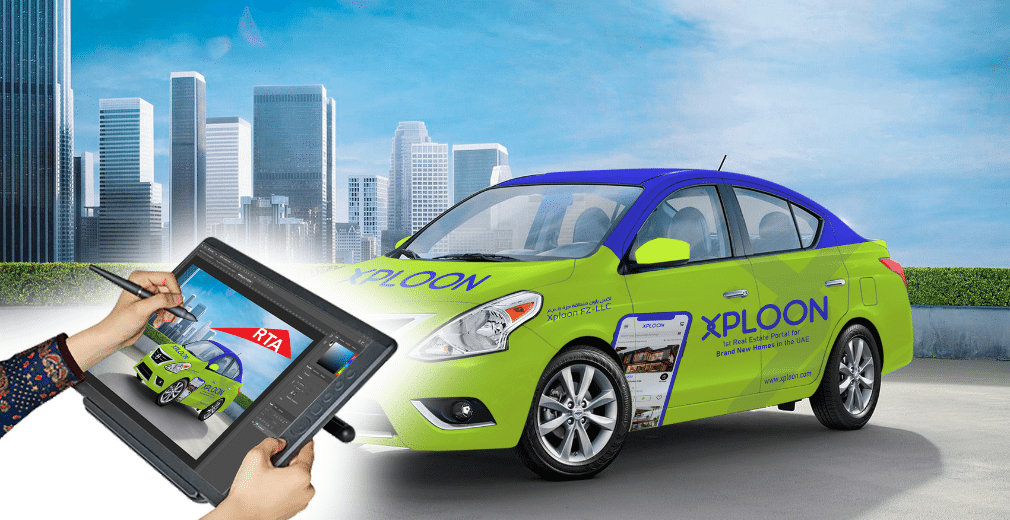
Mobile Marketing Impact
Vehicle advertisements offer unique advantages in Dubai’s bustling market. Mobile visibility creates continuous brand exposure across diverse locations. Professional implementation following RTA guidelines maximizes marketing potential while maintaining regulatory compliance.
Documentation and Compliance
Proper record-keeping supports ongoing compliance with RTA regulations. Companies benefit from maintaining detailed documentation of permits, design modifications, and installation certifications. Regular reviews ensure continued alignment with current guidelines.
Maintenance and Upkeep
Regular maintenance preserves vehicle branding quality and compliance. Professional cleaning and repairs maintain advertisement appearance while preventing deterioration. Timely updates address wear and tear while ensuring continued regulatory compliance.
Future Considerations
Dubai’s dynamic business environment may influence future vehicle branding design guidelines. Companies benefit from maintaining flexibility in their advertising approach while staying informed about regulatory updates. Professional relationships with RTA-approved service providers support long-term advertising success.
Marketing Integration
Vehicle branding serves as a powerful component of comprehensive marketing strategies. Companies maximize impact by integrating mobile advertisements with broader marketing initiatives. Professional design and implementation create memorable brand presence while maintaining RTA compliance.
Business Growth Opportunities
Compliant vehicle branding design supports business expansion in Dubai’s competitive market. Mobile advertising reaches diverse audiences while building brand recognition. Professional implementation creates a positive market presence while maintaining regulatory alignment.
Companies investing in quality design and proper implementation enjoy enhanced brand visibility while contributing to Dubai’s professional business environment.
Conclusion
Understanding and following RTA guidelines for vehicle branding design helps companies create effective mobile advertising campaigns. Professional implementation combined with regulatory compliance supports marketing success while maintaining Dubai’s high standards for road safety and visual aesthetics.
